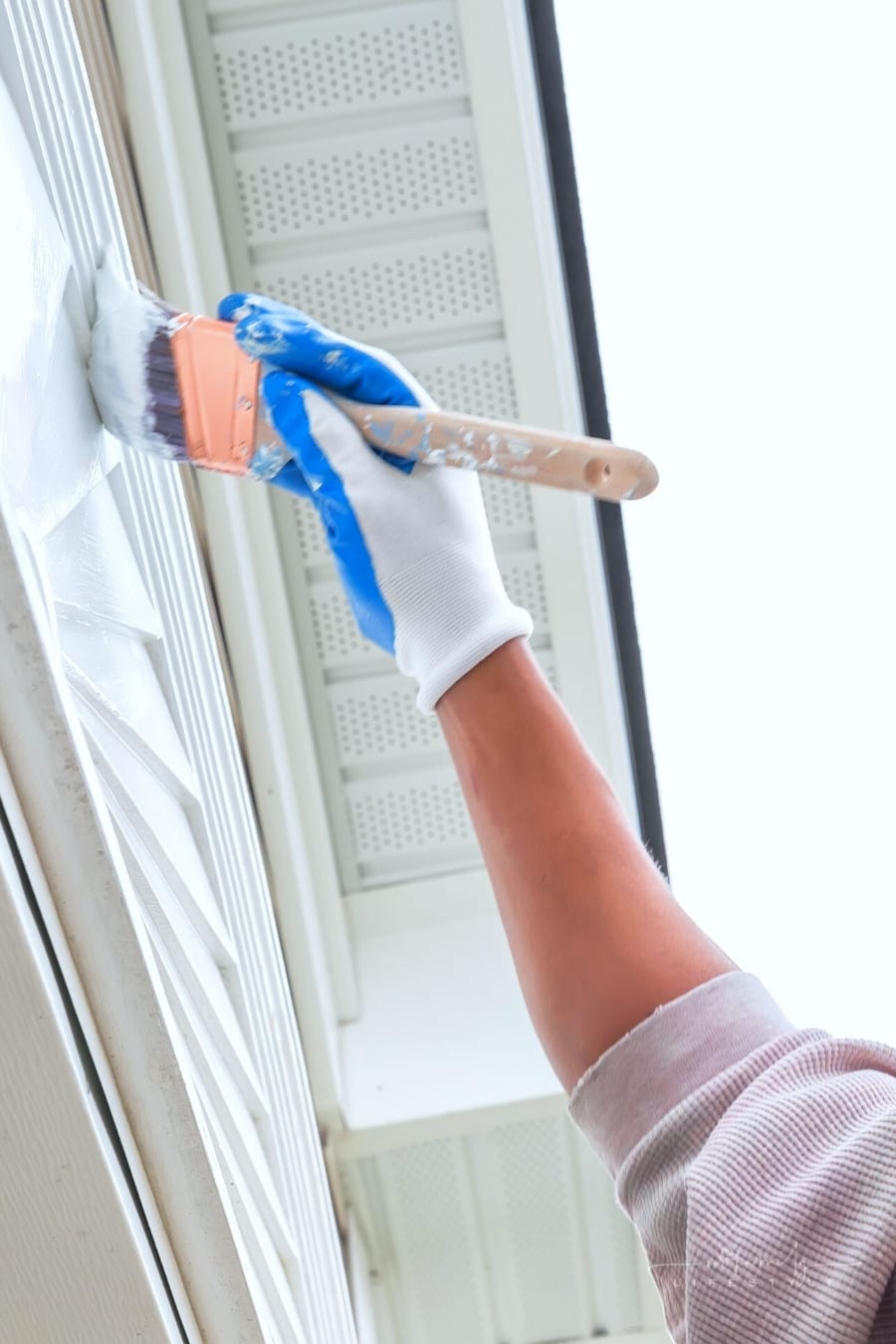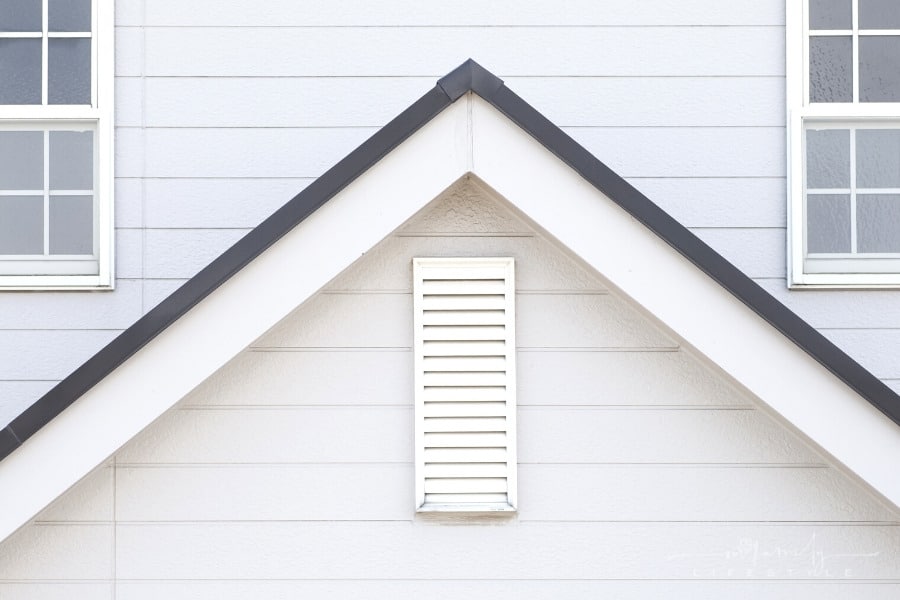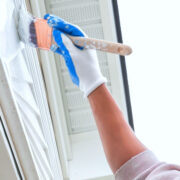Can You Paint Plastic Fascia and Soffit?
If you’re wondering whether you can paint fascias and soffits, or whether you can make the exterior of your home look a little bit nice—the short answer is yes, you can.
With the right equipment and planning, you can give your soffits and your fascia boards a new lease of life.
Here’s how.

What are fascia boards and soffits?
Often overlooked and forgotten about, fascia boards and soffits are part of the exterior trim of residential and commercial properties.
They help to provide essential protection to the roof and to the gutters, says CheckaRoof. They are often made out of timber, but can sometimes be made from uPVC and aluminum too, especially in more modern properties as these materials require less maintenance.
Despite being essential parts of the home, the fascia boards beneath gutters and the soffits often receive very little attention.
This can lead to serious issues down the line that will require a qualified professional to fix. These are also something you should check when buying a house.
Why paint fascia boards and soffit?
There are a few benefits to painting soffits and fascia boards, says Revamp Spray. They include:
1. Replenishes peeling paint chips
If your fascia boards were painted by a professional when you had them installed, replaced, or when the home was built and you haven’t repainted the boards since, there is every chance that your fascia boards will just have flaking paint on them, or they’ll need topping up; after all, paint fades.
This is a clear sign that they need repainting. Repainting your soffits and fascia is a relatively easy job that will improve your home’s external appearance, and all it takes is a little exterior painting!
2. Protects the fascia boards and soffits
For new fascia and soffits, you might find yourself dealing with bare wood. This won’t have any flaking paint on it, but it will still need a coat of paint.
The paint color is completely up to you, but using exterior paints on your fascia board, whether it is new wood or whether you’re replenishing the paint, will help to protect the material.
This is slightly less important for aluminum and uPVC cladding, but for wooden fascias and soffits, cracked paint can lead to damage to the structure.
Holes and gaps in the pain allow weather damage, damp, and insect damage to occur within the wood. This then damages the material and can lead to gutters collapsing.
3. Increases the curb appeal
Painting your soffits and fascia gives you the opportunity to look at all of the paints available and pick a new color that works for your home, aesthetic and style. There are some really fashionable colors available like anthracite gray, and painting your fascia in these colors can actually increase the value of your home!
This means that it will sell for more if you decide to sell and that you may be able to charge more for rent if you’re using the property for that purpose.
How to paint fascia boards and soffits
When it comes to painting fascias, for both domestic and commercial properties, there are some important steps that you must take first in order to prepare the substrate for painting.
You must also make sure that you have the right tools, like a good paint, a stable ladder, gloves, and fine sandpaper. You might also need a power washer and caulk.
1. Clean your substrate
Since the fascia is open to the outside world, you need to clean it well before you get the paint out. There are a few ways to do this; you might choose to use a sponge and warm soapy water, or power washing.
It depends on how big the surface you’re painting is, and how dirty it is! You should make sure that all the dirt, mildew and any leftover paint chips are gone.
To remove the paint, you might need to use a scraper. It is important that you get rid of as much as you can to ensure a high-quality finish.
2. Check the condition of your fascias and soffits
This is especially important in older properties. You should make sure before you begin to paint, that the wood is completely free of asbestos and that there is no rotten wood or mold. If you’re a bit unsure, you can do an asbestos sample testing.
All three of these can cause significant damage to the structural integrity of your fascia boards and soffits and will need dealing with prior to painting.
3. Fill and smooth
It is only natural, particularly on dated wood, that your fascias and soffits may have knots and holes in them. These need to be filled and sanded down before you paint soffits and fascias.
Use a wood filler caulk to do this, and then once set, sand the surface down to ensure a smooth surface for painting.
4. Apply your primer
Primer is incredibly important when doing exterior painting, especially if you have had issues with rotten wood. Primer helps to protect the wood, and is essential, especially if you’re painting on bare wood.
You can apply primer to the exterior trim using either a paint brush or a paint roller.
4. Paint
To paint your exterior trim you will need a paint brush that is designed for exterior use. This will work best with exterior paints. Start from one side of the house and paint in one direction to avoid brush marks and lap marks that could ruin the finish of the paint job.
Bare in mind that you will need to be up a ladder for quite some time, and then once the first coat is dry, you will have to go back up to do another coat. If you’re scared of heights—consider hiring a painting service.
What is the best paint to use for painting soffits and fascias?
Any exterior trim paint will do, but there are a couple of paints that are often considered the best paint out there for the job. For bare wood, try Dulux Trade Weathershield High Gloss paint.
When used with a primer and undercoat, this paint provides strong protection against insects, damp, mildew and the weather, and will last a reasonable amount of time before fading.
For already painted wood, uPVC cladding or aluminum, try Zinsser Allcoat Exterior.


